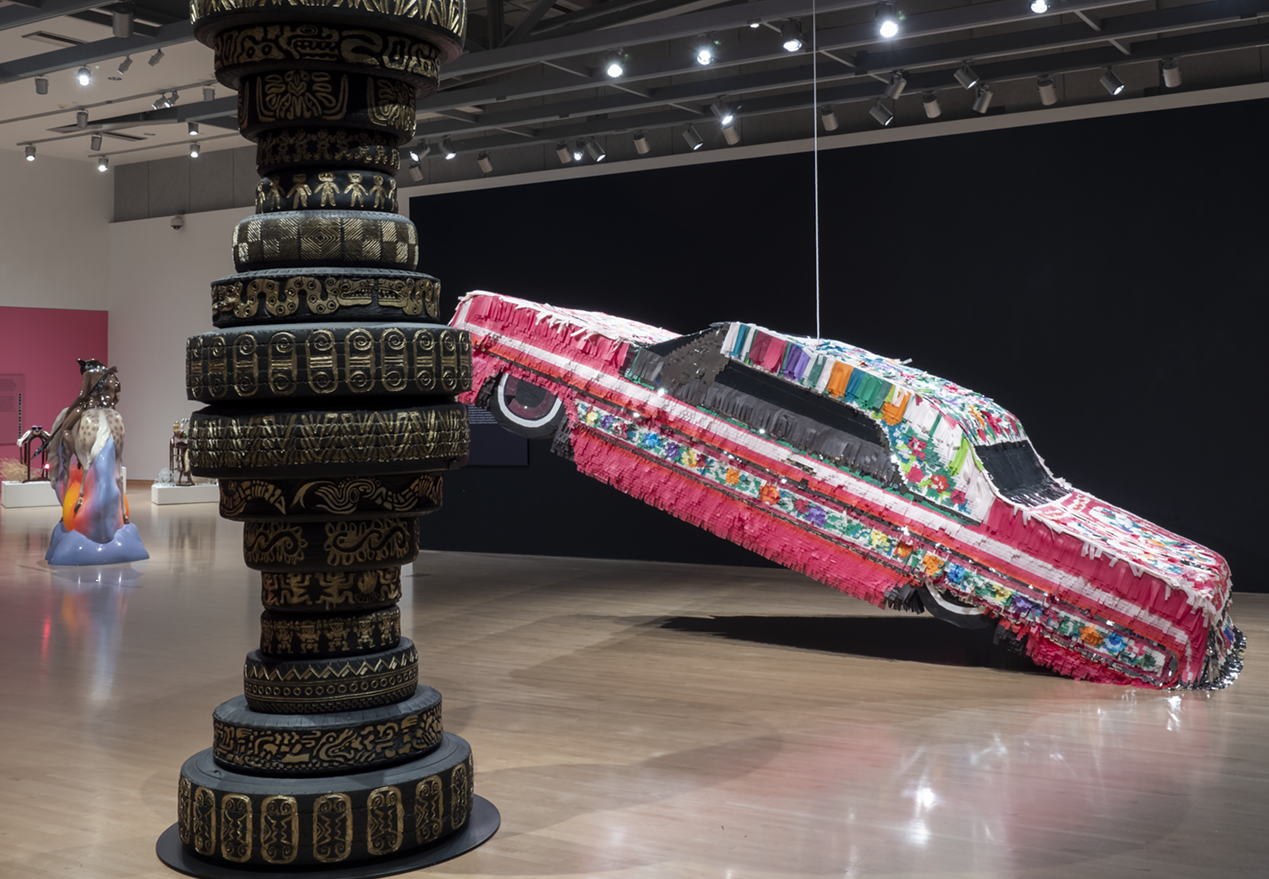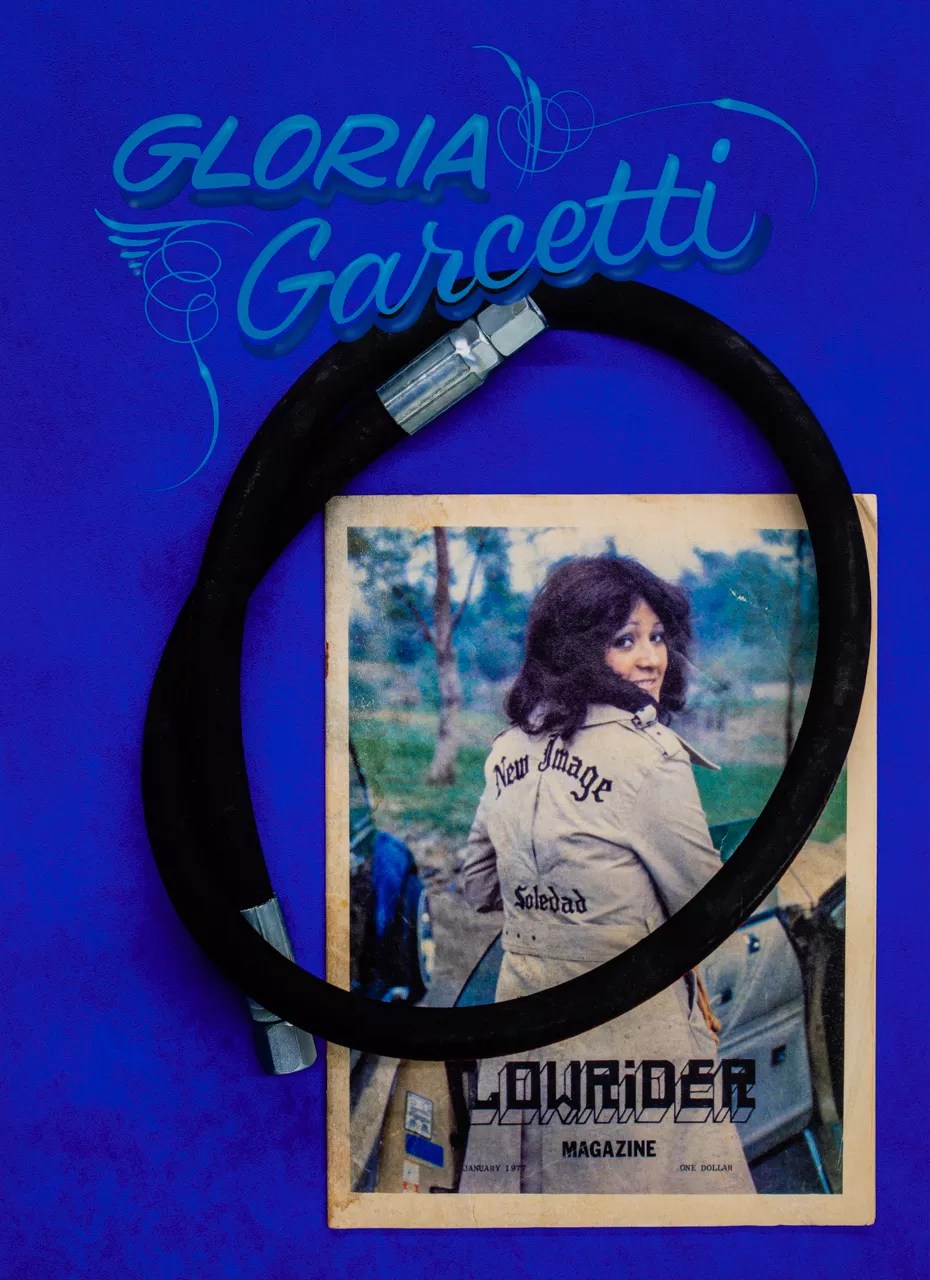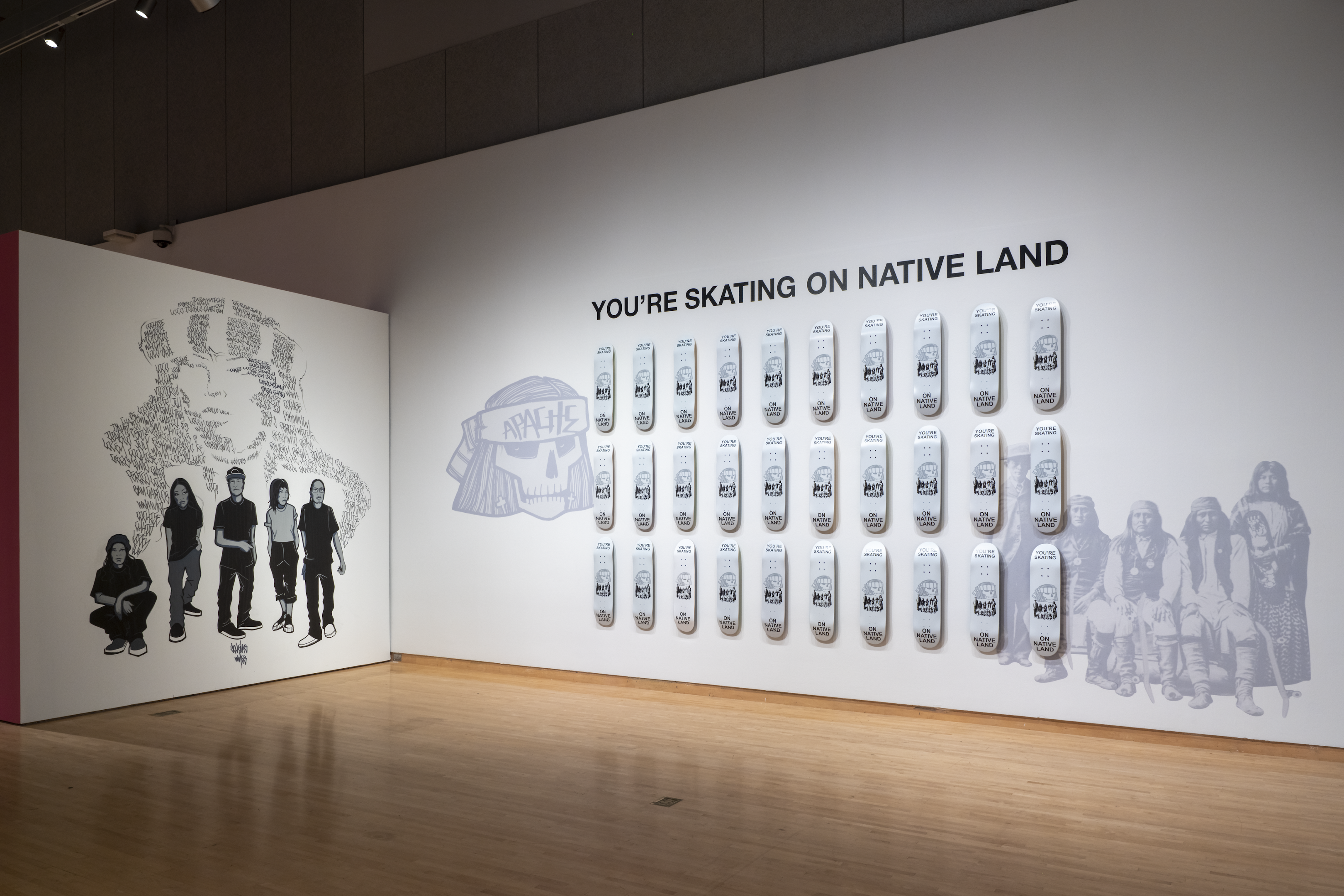
Airi Katsuta

Audio By Carbonatix
The current Phoenix Art Museum exhibition “Desert Rider (Navegando El Desierto)” features work in multiple mediums by Indigenous and Latinx artists working in the Southwest who examine relationships between transportation, culture, and identity. It’s a body of work that is as societally profound as it is visually mesmerizing.
One of the funders of the show is the PAM Men’s Arts Council. They’re a charitable nonprofit organization that raises funds to support exhibitions, acquisitions, and art education at the museum.
They are also a group whose members totally dig cars.
Auto aficionados might know about their annual car events: the Bell Lexus North Scottsdale Copperstate 1000 road rally and the Copperstate Overland vintage car off-road rally. Another one of their fundraisers is the MAC & Friends Fun Shoot, where clay targets get popped after breakfast.
Joel Coen, the Men’s Arts Council president, felt their support was vital once they knew what the exhibition would include.
“We are heavily based in cars and automotive history. When we saw the number of lowrider components that would be included, that was what first struck us internally. Then we saw the skateboard component and the overall automotive presence it would contain, and it is all things directly connected to us and that we really care about,” he says.
On the automotive end, there are some glorious constructs. Justin Favela’s car-sized Gypsy Rose Piñata (III) is one. It hangs from the ceiling, lifting its front end and resting on its bottom. The position brings the auto-pinata to life and replicates the motion and bounce inherent to many lowrider car creations. It is made of found objects, cardboard, paper, and glue and its color scheme exemplifies Mexican celebratory traditions. Mexican-Americans birthed the lowrider car culture, and this showcases those creative origins.
Liz Cohen’s Trabantimino made a big splash when it debuted in 2010 – rightfully so. The artist spent eight years combining two very different vehicles – an East German Trabant and Chevy El Camino – into a lowrider. She was inspired by the Chicano culture’s boldness in making cars that rode low and slow, not making it easy for someone to look away.

Liz Cohen, Gloria Garcetti, 2018. Pigment print, enamel paint.
Liz Cohen
Also part of Desert Rider, Cohen’s Stories Better Told by Others features color inkjet prints of Lowrider Magazine covers with hand-painted enamel that boldly and stylishly displays the names of women who graced the magazine’s covers. Cohen gives these women – who were as influential to the culture as their male counterparts – deserved recognition.
Speaking of not being able to turn away, Douglas Miles’s installation, You’re Skating on Native Land, envelopes you into its adjoining L-shaped walls and holds you in a natural pause. It is a stunning reminder of place, composed of three rows of evenly-lined skateboards under the title, each tagged with the exact words.
The walls also feature images of people from Miles’ Apache community, both young and old. Keeping the past alive while focusing on the present and future is where Miles prevails. Founder of Apache Skateboards and prolific artist working in multiple mediums, the actuality of Native American life is what you get, delivered with a restless and relentless intent.

Douglas Miles, You’re Skating on Native Land, 2022. Apache
skateboards, vinyl. Courtesy of the artist. Installation view of Desert
Rider, 2022, Phoenix Art Museum. Courtesy of Phoenix Art
Museum.
Airi Katsuta
Coen found the piece especially moving. “It’s a very important piece,” he says. “Miles talked about how his work explores negotiating traditional indigenous values with contemporary life. I thought that was an insightful and educational way for me to examine and think about his art.”
He finds the whole exhibition a genuine way to explore other cultures.
“There are probably millions of times that people see images of a lowrider car in a music video, on TV, or in a magazine, that they don’t really know the background of these cars – who made them and why. They don’t understand the Latin culture it comes from or the artistry associated. We want everyone to see the time and effort spent on these cultural creations and what that means. To see the beauty of an object and, more importantly, the culture behind it is the most important part.”
PAM’s Desert Rider does a great job of bringing together a diverse and stellar mix of artists who blend emotional elements of their respective individual and cultural identities into their work.
Coen, who says the Men’s Arts Council is looking to do more work in the arts education arena, hopes the community will come and see what Desert Rider offers and that his group looks forward to being a part of more exhibitions that have a similar impact.
The special exhibition Desert Rider runs through September 18 at Phoenix Art Museum, 1625 North Central Avenue.